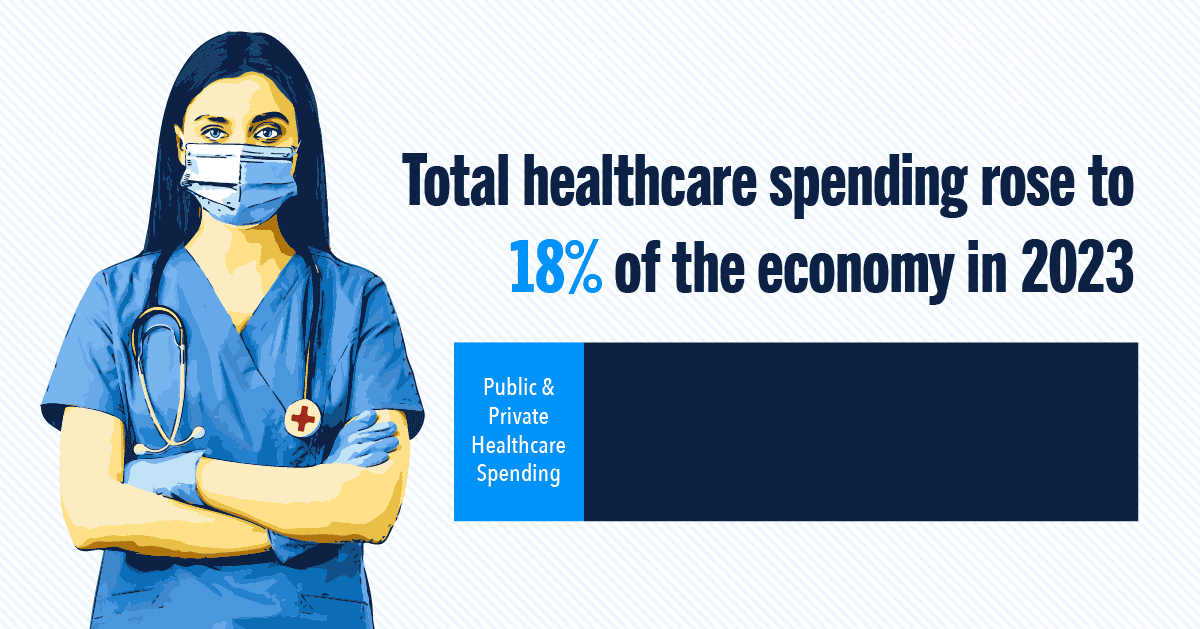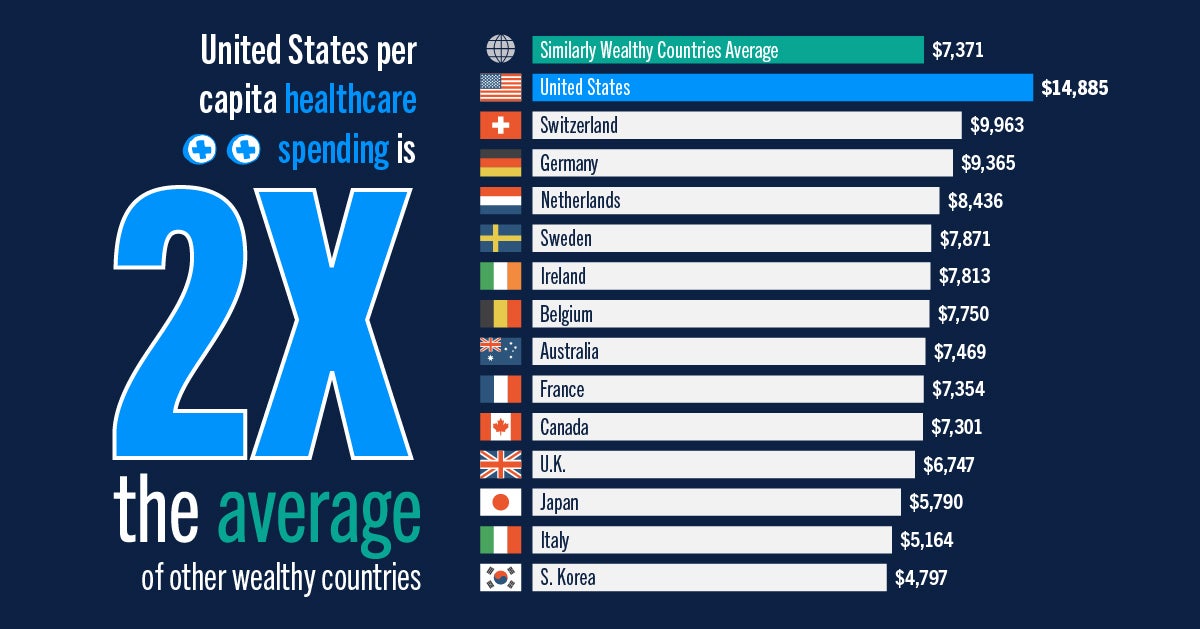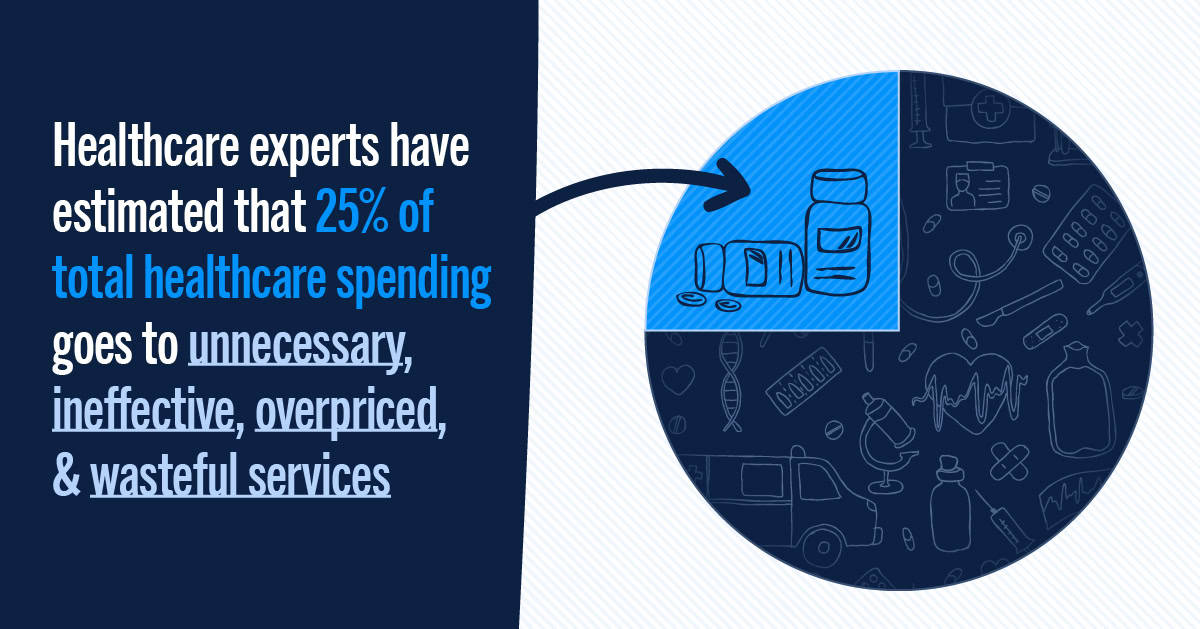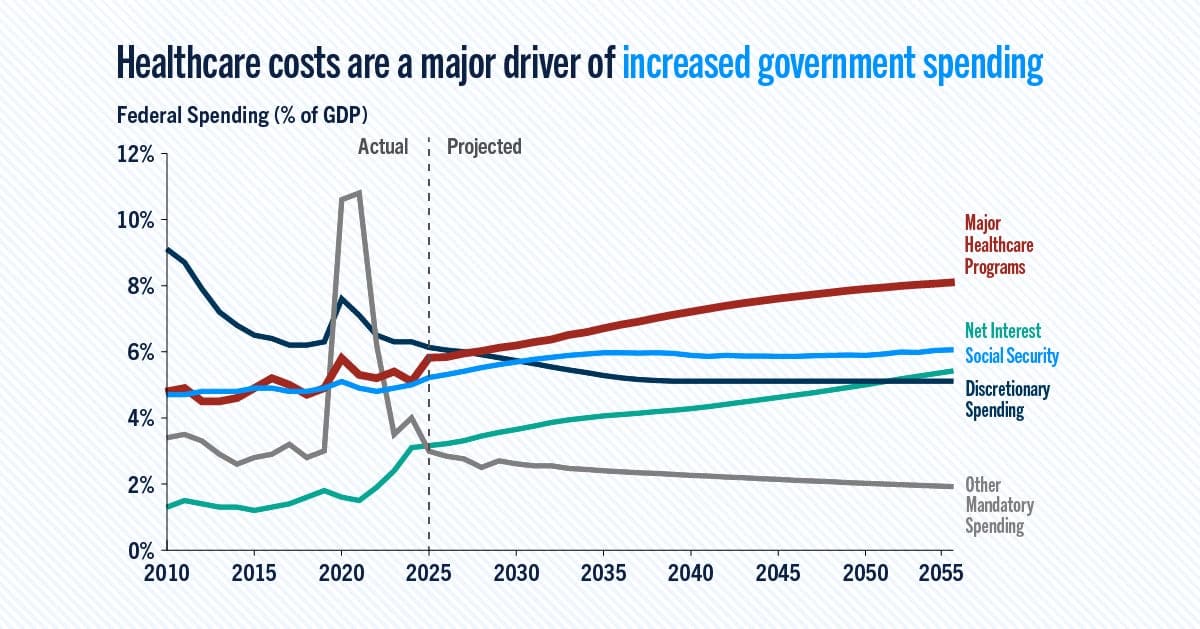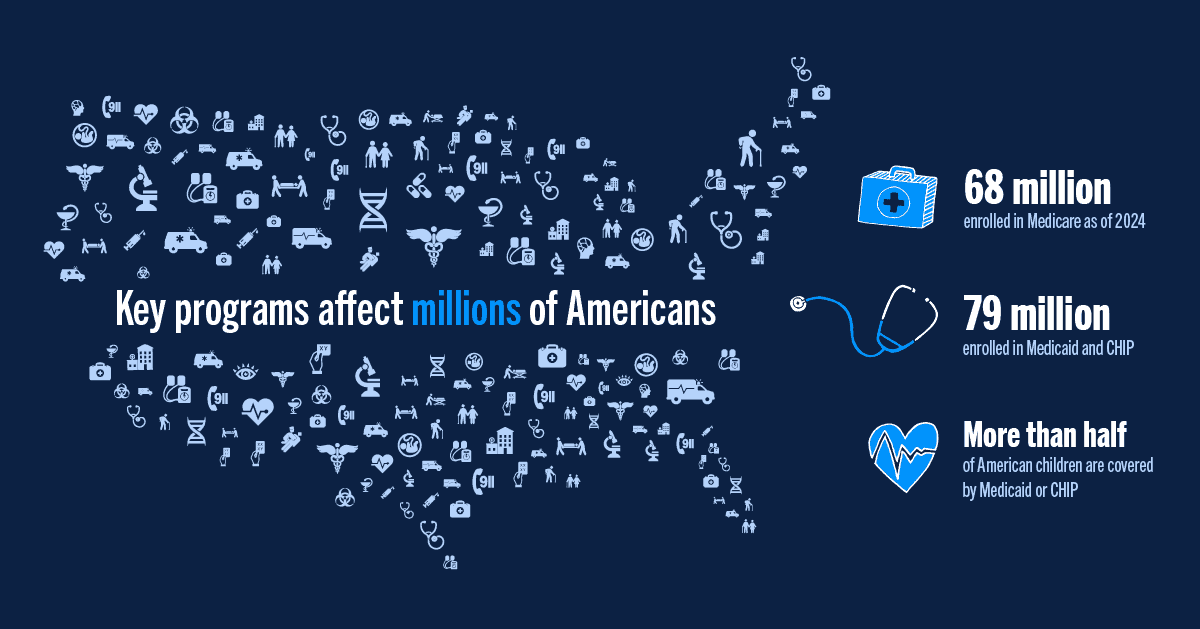Improving our healthcare system to deliver better quality care at lower cost is critically important to our nation’s long-term economic and fiscal well-being.
The rising cost of healthcare is one of the key drivers of our growing national debt, which crowds out important investments in our future economy, including priority areas like education, research and development, and infrastructure.
Although the United States spends significantly more per person on healthcare than other industrialized nations, our health outcomes are no better — and are often worse.
As lawmakers consider changes to healthcare reform, the infographic below highlights some key facts about the American healthcare system. To learn more about possible policy options, see our discussion of healthcare solutions or visit the Peterson Center on Healthcare.

Feel free to share this infographic on Twitter.
Further Reading
Healthcare Spending Will Be One-Fifth of the Economy Within a Decade
Healthcare spending in the United States is rising, with serious implications for the federal budget.
How Does the U.S. Healthcare System Compare to Other Countries?
Despite higher healthcare spending, America’s health outcomes are not any better than those in other developed countries.
Why Are Americans Paying More for Healthcare?
High healthcare spending is not necessarily a bad thing, especially if it leads to better health outcomes. However, that is not the case in the United States.
